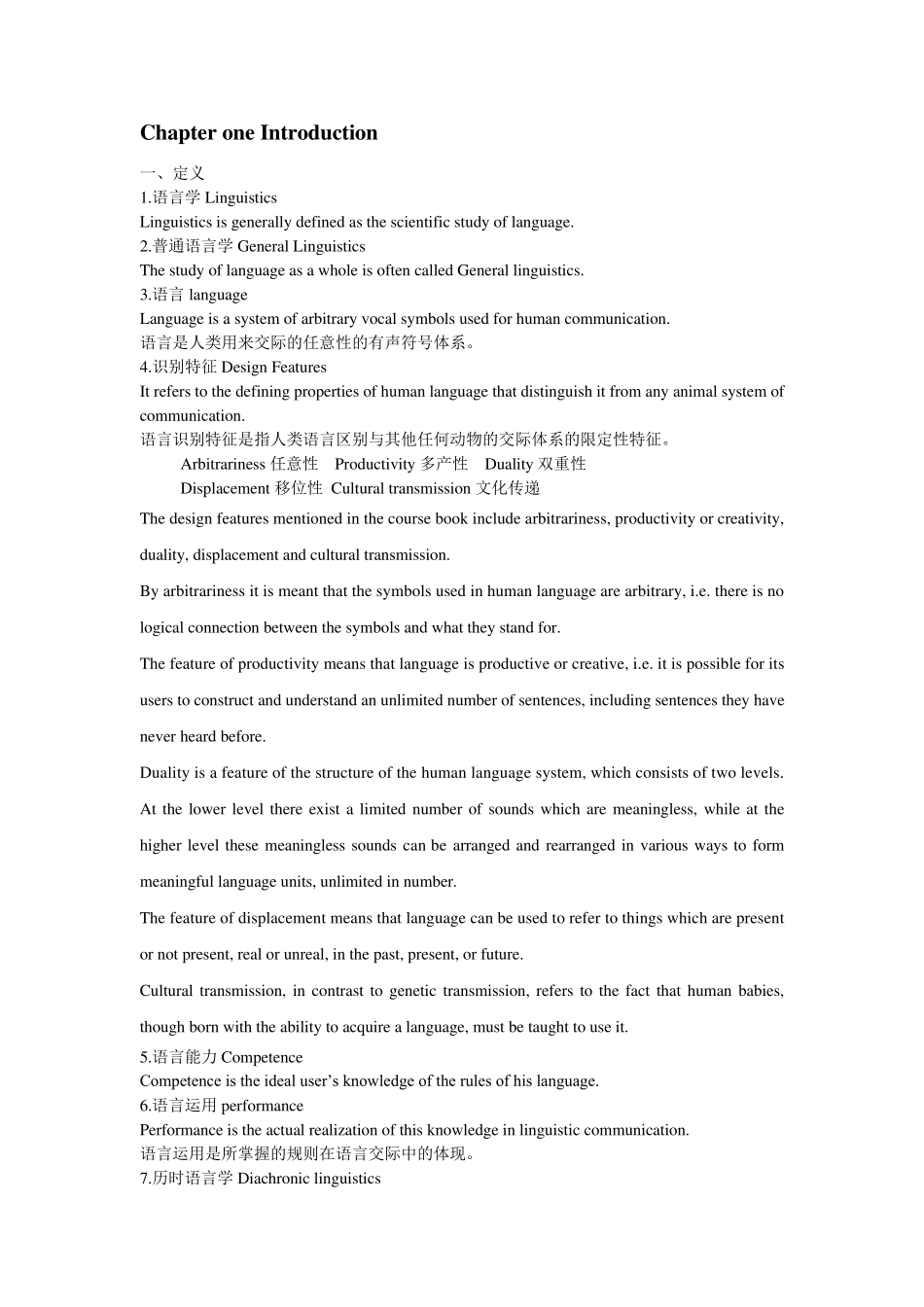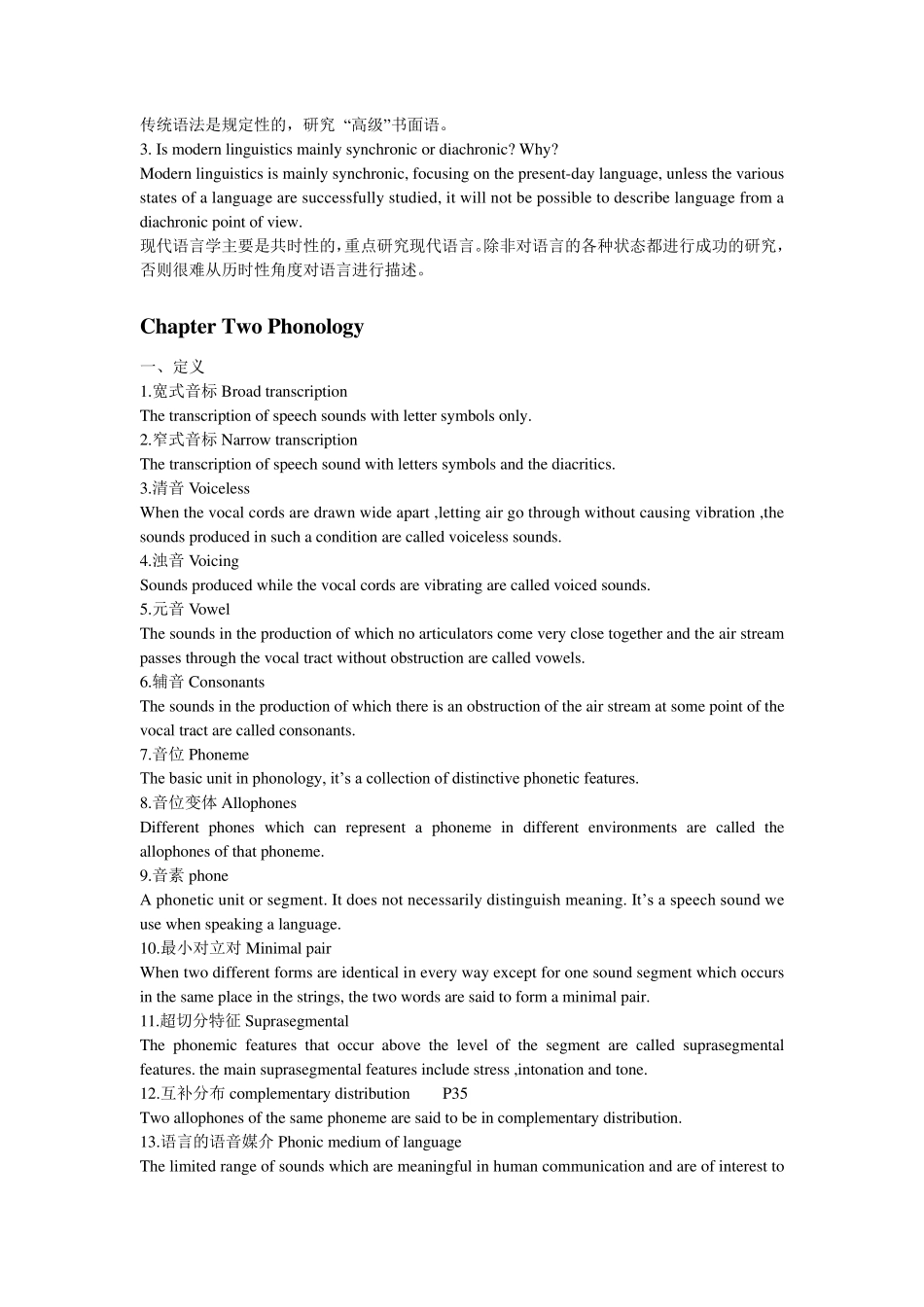Chapter one Introdu ction 一、定义 1.语言学 Linguistics Linguistics is generally defined as the scientific study of language. 2.普通语言学 General Linguistics The study of language as a whole is often called General linguistics. 3.语言 language Language is a system of arbitrary vocal symbols used for human communication. 语言是人类用来交际的任意性的有声符号体系。 4.识别特征 Design Features It refers to the defining properties of human language that distinguish it from any animal system of communication. 语言识别特征是指人类语言区别与其他任何动物的交际体系的限定性特征。 Arbitrariness 任意性 Productivity 多产性 Duality 双重性 Displacement 移位性 Cultural transmission 文化传递 The design features mentioned in the course book include arbitrariness, productivity or creativity, duality, displacement and cultural transmission. By arbitrariness it is meant that the symbols used in human language are arbitrary, i.e. there is no logical connection between the symbols and what they stand for. The feature of productivity means that language is productive or creative, i.e. it is possible for its users to construct and understand an unlimited number of sentences, including sentences they have never heard before. Duality is a feature of the structure of the human language system, which consists of two levels. At the lower level there exist a limited number of sounds which are meaningless, while at the higher level these meaningless sounds can be arranged and rearranged in various ways to form meaningful language units, unlimited in number. The feature of displacement means that language can be used to refer to things which are present or not present, real or unreal, in the past, present, or future. Cultural transmission, in contrast t...


